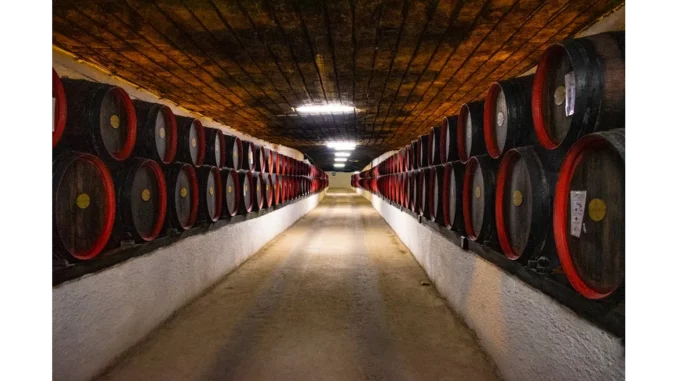
Preserving the Nectar: Mastering the Art of Wine Storage
In the world of fine wines, where history and complexity intertwine, the journey from vineyard to glass is a delicate one. Whether you are an experienced collector or a burgeoning enthusiast, understanding the subtleties of wine storage is paramount to preserving the integrity and nuanced flavours of your collection. Here, we delve into the sophisticated methods and considerations necessary to ensure each bottle reaches its zenith.
Embracing Tradition: The Case Box Method
For those embarking on their vinous voyage or navigating a modest budget, the case box method presents an elegant yet uncomplicated solution. By storing wine bottles upside down within their original case boxes, the corks remain perpetually moist, safeguarding them against the peril of drying and cracking. This approach is ideally suited to cool, dim sanctuaries such as basements or closets, where temperatures remain consistently stable.
Consistency is the cornerstone of successful wine storage. Wines flourish in environments ranging from 7°C to 18°C (45°F to 64°F), with a preference for gradual transitions over abrupt fluctuations. By maintaining the lower spectrum of this temperature range, the aging process is gently decelerated, allowing the wine’s delicate flavours to remain intact.
The Modern Marvel: Technology in Wine Preservation
While time-honoured methods like the case box retain their efficacy, contemporary technology offers innovative advancements that elevate the art of wine preservation. Enter DIAM corks: a revolutionary development in the industry that guarantees the prevention of oxygen transfer. Crafted from sustainable materials, these corks ensure your wine remains free from unwanted oxidation, preserving its authentic taste and bouquet.
Temperature: The Pillar of Preservation
Temperature stands as the most critical element in the realm of wine storage. Wines exposed to unsuitable temperatures risk spoilage or premature aging. An ideal storage temperature hovers around 13°C (55°F), facilitating a gradual maturation that does not compromise quality. It is noteworthy that varying wine types might demand specific temperature considerations; red wines, for instance, generally prosper at slightly warmer conditions than whites.
Humidity: The Guardian of the Cork
Preserving the cork’s integrity is contingent upon maintaining appropriate humidity levels. A range of 50% to 70% ensures corks remain supple, averting air infiltration that could mar the wine. Conversely, excessive humidity may encourage mould growth and label damage. Investing in a hygrometer can assist in diligently monitoring and regulating humidity within your storage space.
Light: The Silent Saboteur
Light, particularly in the form of UV rays, poses a silent threat to wine, potentially altering its chemical structure and accelerating aging. To counteract this, store wine in dark locations or employ UV-resistant glass for display cases. Should natural light be inescapable, opaque or dark-hued bottles serve as a shield against harmful rays.
Bottle Orientation: Ensuring the Cork’s Embrace
The orientation of wine bottles is a seemingly simple yet vital aspect of preservation. Horizontal storage ensures the wine remains in contact with the cork, preventing it from drying and shrinking, which could compromise the seal and invite oxygen into the bottle.
The Symphony of Well-Stored Wine
The art of wine storage is a harmonious blend of tradition and modern innovation. By embracing these foundational principles, you can protect your cherished collection, allowing its flavours to mature gracefully over time. Whether you opt for the practicality of the case box method or embrace cutting-edge storage solutions, the ultimate aim is to cultivate an environment where your wines can flourish. As you savour each bottle, a deeper appreciation for the intricate dance between science and tradition will undoubtedly enrich your experience, transforming every sip into a celebration of excellence.


Be the first to comment